| Tropical Apricot - Dovyalis hebecarpa x D. abyssinica | |
|---|---|
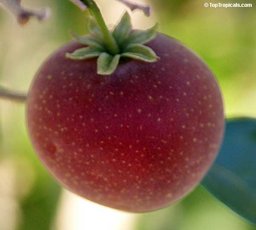 Fig. 1  Dovyalis hebecarpa x Dovyalis abyssinica 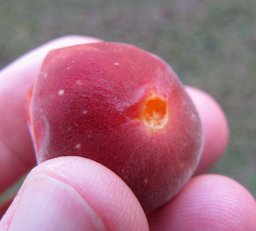 Fig. 2  D. abyssinica x hebecarpa (tropical apricot, Florida gooseberry) fruit Pali o Waipio, Maui, Hawai'i 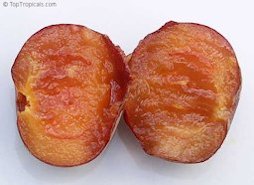 Fig. 3  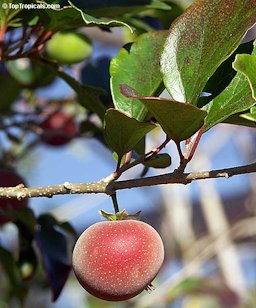 Fig. 4  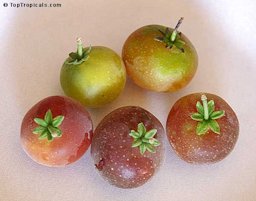 Fig. 5  D. abyssinica x hebecarpa 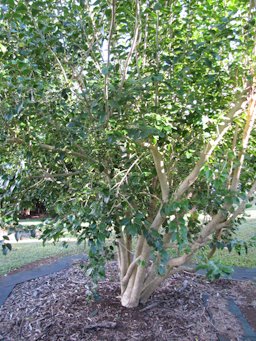 Fig. 6  D. abyssinica x hebecarpa (Tropical apricot, Florida gooseberry) habit Pali o Waipio, Maui, Hawai'i |
Scientific
name Dovyalis hebecarpa x D. abyssinica Common names Florida gooseberry Relatives Kei apple (D. caffra), kitembilla (D. hebecarpa), Abyssinian gooseberry (D. abyssinica) Family Salicaceae (willow family) formerly Flacourtiaceae Origin Florida USDA hardiness zones 9-10; sub-tropical Uses Food; hedge Height 15 ft (4.5 m) 2 Spread 15 ft (4.5 m) 2 Crown Rounded 5 Plant habit Large shrub Growth rate In deep soils with proper nutrition, the plants can grow more than 3 ft (1 m) per year in heigh/width 1 Trunk/bark/branches Branches long, drooping; vary greatly as to number/size of thorns 2 Pruning requirement Required for ease of harvest Leaves Short-stalked; shiny dark green; ovate; wavy margin, to 2 in. (5 cm) long 5 Flowers Small; greenish-yellow; Sept.-Jan. 2 Fruit Berries; round; skin velvety; brownish yellow; white dots; to 1 1/2 in. (4 cm) across; flesh soft, melting; apricot flavor 2,5 Season Dec. through Apr. 2 Light requirement Full sun or partial shade 1,2 Soil tolerances Rich moist soil 2 pH preference 5.5-6.5 2 Soil salt tolerance Poor 2 Cold tolerance Freezes at about 26 °F (-3.3 °C) 2 Plant spacing 15 ft (5 m) is recommended for trees, 3-5 ft (1-1.5 m) for hedges 1 Invasive potential * None reported Pest resistance Susceptible to fruit fly infestation 1 Known hazard Random long spines Reading Material Tropical Apricot, Twelve Fruits Project, University of Hawai'i at Mānoa The Dovyalis, University of Florida, Palm Beach County Four species are grown in Florida with some frequency: the Abyssinian gooseberry, Dovyalis abyssinica, a shrub native to eastern Africa that bears a mildly astringent orange fruit; the kei apple, Dovyalis caffra from Africa which was introduced into Florida prior to 1900, the kitembilla or Ceylon gooseberry, Dovyalis hebecarpa, a vigorous shrub native to Sri Lanka that bears a purple fruit of fair quality, and the governor's plum, Flacourtia ramontchi, native to Africa and southern Asia. The governor's plum has been classified as an invasive exotic in Florida. 10 Origin Tropical apricot is a naturally occurring hybrid from Florida, developed in 1953 from a cross between kitembilla (Dovyalis hebecarpa) and Abyssinian gooseberry (Dovyalis abyssinica). The plant has many of the attributes of both parents. It is also known as dovyah’s hybrid or just dovyalis. The name ketcot was proposed in 1960 but was not widely adopted, as the fruit never achieved the popular ity that was expected. The name tropical apricot, which has been used to describe the fruit’s color and taste, is how the plant is commonly referred to in the pan-tropical areas where it grows. The dovyalis should not be confused with mamey (Mammea americana L.), another fruit called tropical apricot or South American apricot. 1 Description Tropical apricot (Dovyalis hebecarpa X D. abyssinica) P.I. 112086, is a natural cross which resulted from a mixed planting of D. hebecarpa and D. abyssinica at the Subtropical Horticulture Research Station (Chapman Field) in Miami Florida. 4 The tropical apricot differs from the two parents' varieties in that the parents the Kashun (D. Abysssinica) and the Kitembilla (D. Hebercarpa), require male and female for fruiting. The tropical apricot requires one plant for fruiting. 5 The hybrid fruits can be found in Florida, Cuba and Hawai'i, and to a very limited extent in Southern California. They are likely to be spotted at local markets and fruit stands. 7 Flowers Small, dioecious, greenish-white flowers are produced in clusters in the axils of leaves. They have green sepals, and have no petals. The plant has male, female and perfect flowers. The male flowers have long yellow stamens. 5,6,8 Pollination Plants are self fertile. 6 Fruit The fruits are round berries of 1.5 inches. At first the skins are green and hairy, then changing to smooth pale yellow. The skin is dotted with pale spots and has a distinguishable green calyx at the stem, a remnant of the flower. The flesh is an orange yellow color surrounding the three or four dark brown seeds. The fruit produces a sweet-sour taste with a tingling sensation on the teeth, and when fully ripe, tastes like an apricot. 5,7 Most of the fruits form on outer branches. 1 Fruit mature in 30-40 days. Fruit are harvested when fully ripe and starting to soften. Fruit do not store well. 6 Varieties Plants are usually identified as sour and less sour, thorny or nearly thornless. The thorns can be as long as 4–5 inches on mature trees. Seedling shrubs are highly variable in thorniness, degree of sourness of the fruit, and rate of growth. A cultivar, ‘Prodigal’, is available in Florida and may be available in local nurseries. 1 Harvesting The tropical apricot is a heavy producer. A 15-foot tall shrub can produce more than 100 pounds of fruit per year. When harvesting for fresh sales, it is advisable to place fruits directly in the vented container in which it will be sold. Care should be taken to make sure the stem end of the fruit is intact and the fruit is free of fruit fly infestation, which usually appears as a soft spot. When harvested for processing, the fruit should be processed as soon as possible after harvest, as it attracts fruit flies and continues to decay. 1 One practical disadvantage is that the green, 6-pointed calyx, 3/8 in (1 cm) wide, remains on the plant as the fruit is picked, leaving a cavity in the base of the fruit. It is, therefore, not marketable as a fresh fruit but can be used to make sirup, jam or other preserves. 7 Propagation This plant is easily propagated from cuttings or from air-layers, which will fruit in the first or second year after planting. Seedlings are often found under mature trees. Seedlings generally produce fruit in 3–4 years, but they tend to have more thorns than plants propagated from cuttings or air-layers. Grafting the tropical apricot to a kitembilla (D. hebecarpa) rootstock has been practiced in South Florida’s commercial nurseries. 1 When thus grafted, it seems to be less thorny and produces more fruit. 2 Planting Dovyalis is a very good shrub for areas where you want a large screening affect, and it is often used as an informal hedge along property lines or to block undesirable views. 3 Pruning Tropical apricot requires heavy pruning, especially if maintained as a barrier hedge. Remove branches with excessive thorns, dieback, or lateral growth to facilitate harvesting. 1 Fruit needs to be thinned to produce larger fruit. 2 Fertilizing Plants should be given a complete fertilizer, such as or ganic 6-6-6, quarterly. Additional minor elements should be applied yearly or twice yearly if the soil pH is above 6.7. Heavy mulching during the dry season will help maintain the plants’ health and appearance. 1 Irrigation Mature plants do not require as much rainfall or irrigation once established. Ten minutes of daily irrigation using a 1 ⁄4 -gallon/hour emitter will increase production during off-seasons. 1 Pests The fruit is susceptible to fruit fly infestation. Aphids are sometimes found on new growth but are usually not severe enough for spraying. 1,3 Diseases No diseases have been reported in the literature or observed on producing trees in South Kona, Hawai'i. 1 Food Uses Fruits are commonly eaten fresh or used for various types of jellies, jams, pies and drinks. The Dovyalis can be made into an excellent wine. 3 It is easily frozen for future use, either as a whole fruit or as processed puree. Chefs (in Hawai'i) have created jelly, juice, salad dressing, dipping sauce, hot sauce, BBQ sauce, pickles, chutney, soup, wine, and brandy with this highly versatile fruit. 1 Other Edible Dovyalis species: Abyssinian Gooseberry, D. abyssinica Kei Apple, D. caffra Ceylon Gooseberry, D. hebecarpa List of Growers and Vendors |
| Bibliography 1 Love, Ken, et al. "Twelve Fruits With Potential Value-Added and Culinary Uses." University of Hawai'i at Mānoa, College of Tropical Agriculture and Human Resources, 2007. Accessed 10 Apr. 2022. 2 Florida Fruit. Tampa, Lewis, S. Maxwell, 1967. 3 Joyner, Gene. "The Dovyalis." Horticultural Sciences Dept., UF/IFAS Palm Beach, AskIFAS, edis.ifas.ufl.edu. 4 Ayala-Silva, Tomas, et al. "Morphological and chemical characterization of the kei apple (Dovyalis spp). Meeting Abstract." Subtropical Horticulture Research: Miami, FL, 15 Mar. 2014, USDA/ARS, www.ars.usda.gov/research/publications/publication/?seqNo115=305406. Accessed 15 Apr. 2022. 5 Chiri, Alfredo. "Tropical Apricot, Dovyalis abyssinica x hebecarpa." In the Fullerton Arboretum, Orange County Chapter CRFG, ocfruit.com/Tropical_Apricot.php. Accessed 15 Apr. 2022. 6 "Dovyalis abyssinica x Dovyalis hebecarpa - Florida gooseberry, Tropical apricot, Florida." Food Plants International, Plant Fact Sheets, edn.link/rezjpa. Accessed 15 Apr. 2022. 7 "Tropical Apricot Berries." Specialty Produce, www.specialtyproduce.com/produce/Tropical_Apricot_Berries_15812.php. Accessed 15 Apr. 2022. 8 Blancke, Rolf. Tropical Fruits and Other Edible Plants of the World: An Illustrated Guide. China, Comstock Publishing Associates, a division of Cornell University Press, 2016. 9 Fruits of Warm Climates. Julia F. Morton, Miami, 1987. 10 Boning, Charles R. Florida's Best Fruiting Plants- Native and Exotic Trees, Shrubs, and Vines. Sarasota, Pineapple Press, 2006. Photographs Fig. 1,4,5 "Dovyalis hebecarpa, Dovyalis abyssinica." Top Tropicals, toptropicals.com/catalog/uid/Dovyalis_hebecarpa.htm. Accessed 15 Apr. 2022. Fig. 2 Starr, Forest, and Kim. "Dovyalis abyssinica x hebecarpa (Tropical apricot, Florida gooseberry) fruit Pali o Waipio, Maui, Hawai'i." Starr Environmental, 8 Nov. 2012, no. 121108-0797, (CC BY 4.0), Image cropped, www.starrenvironmental.com/images/image/?q=25169959356. Accessed 15 Apr. 2022. Fig. 6 Starr, Forest, and Kim. "Dovyalis abyssinica x hebecarpa (Tropical apricot, Florida gooseberry) habit Pali o Waipio, Maui, Hawai'i." Starr Environmental, 8 Nov. 2012, no. 121108-0796, (CC BY 4.0), www.starrenvironmental.com/images/image/?q=24828609539. Accessed 15 Apr. 2022. * UF/IFAS Assessment of Non-native Plants in Florida's Natural Areas ** Information provided is not intended to be used as a guide for treatment of medical conditions. Published 21 Apr. 2021 LR. Last update 24 May 2024 LR |
|